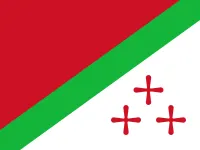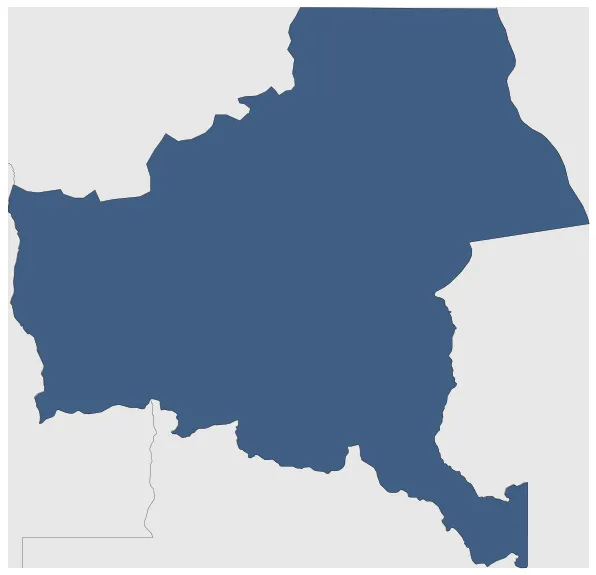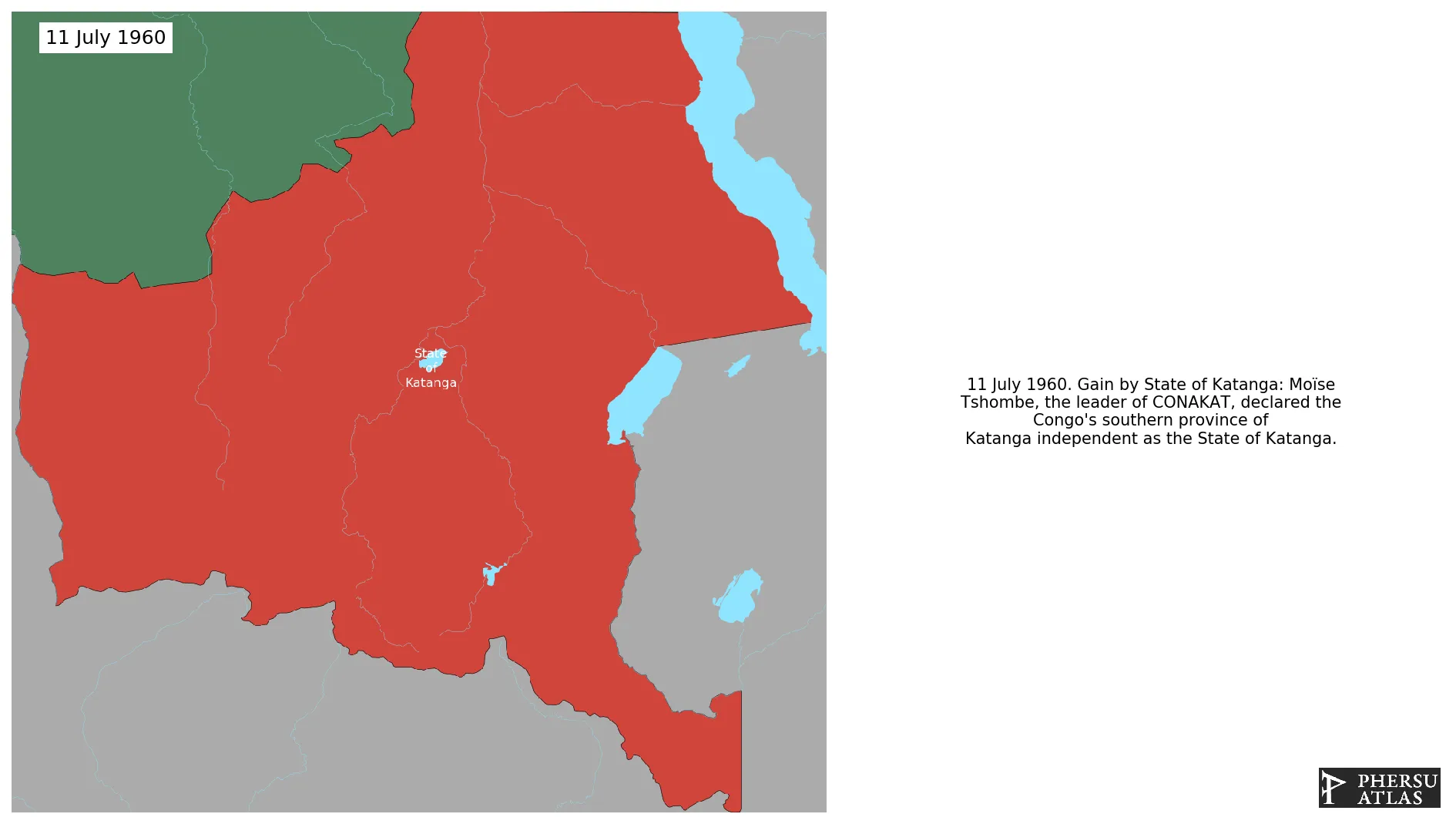 State of Katanga
State of Katanga
If you are looking for the page with the statistics about this polity you can find it here:All Statistics
On 11 July 1960, Moïse Tshombe, the leader of CONAKAT, declared the Congo's southern province of Katanga independent as the State of Katanga.
Establishment
July 1960: Moïse Tshombe, the leader of CONAKAT, declared the Congo's southern province of Katanga independent as the State of Katanga.
December 1960: Stanleyville troops occupied Bukavu.
Chronology
Interactive Chronologies with maps are available in the section Changes Navigation
Is a series of wars in the Democratic Republic of the Congo that started shortly after its independence from Belgium in 1960. The conflicts, that continue to this day, mainly consist of revolts against the central government caused by local ethnic secessionist movements.
1.1.Congo Crisis
Were a series of revolts against the central government of the newly established Republic of the Congo (modern-day Democratic Republic of the Congo). The war ended with Mobutu Sese Soko reuniting the country and establishing an authoritarian regime.
1.1.1.Secessionistic States (Congo Crisis)
At the beginning of the Congo crisis several territories declared their independence from the central government.
January 1961: Stanleyville forces had occupied northern Katanga as far in as Manono.
December 1962: On 24 December 1962, UN troops and the Katangese Gendarmerie clashed near Élisabethville and fighting broke out. After attempts to reach a ceasefire failed, UN troops launched Operation Grandslam and occupied Élisabethville.
January 1963: In 1963, Indian UN troops, under the command of Commandant Pat Quinlan, occupied Jadotville in the Republic of the Congo (Léopoldville) during the Congo Crisis. They were part of a peacekeeping mission but found themselves surrounded and outnumbered by Congolese troops and mercenaries.
January 1963: UN troops seized an abandoned gendarmerie base and secured Shinkolobwe.
January 1963: On 14 January, Indian troops found the last intact bridge into Kolwezi. After a brief fight with gendarmes and mercenaries they secured it and crossed over, stopping at the city outskirts to await further instruction.
January 1963: Tshombe surrendered his final stronghold of Kolwezi, effectively ending the Katangese secession.
Disestablishment
January 1963: In 1963, Indian UN troops, under the command of Commandant Pat Quinlan, occupied Jadotville in the Republic of the Congo (Léopoldville) during the Congo Crisis. They were part of a peacekeeping mission but found themselves surrounded and outnumbered by Congolese troops and mercenaries.
January 1963: UN troops seized an abandoned gendarmerie base and secured Shinkolobwe.
January 1963: On 14 January, Indian troops found the last intact bridge into Kolwezi. After a brief fight with gendarmes and mercenaries they secured it and crossed over, stopping at the city outskirts to await further instruction.
January 1963: Tshombe surrendered his final stronghold of Kolwezi, effectively ending the Katangese secession.


 State of Katanga
State of Katanga




























